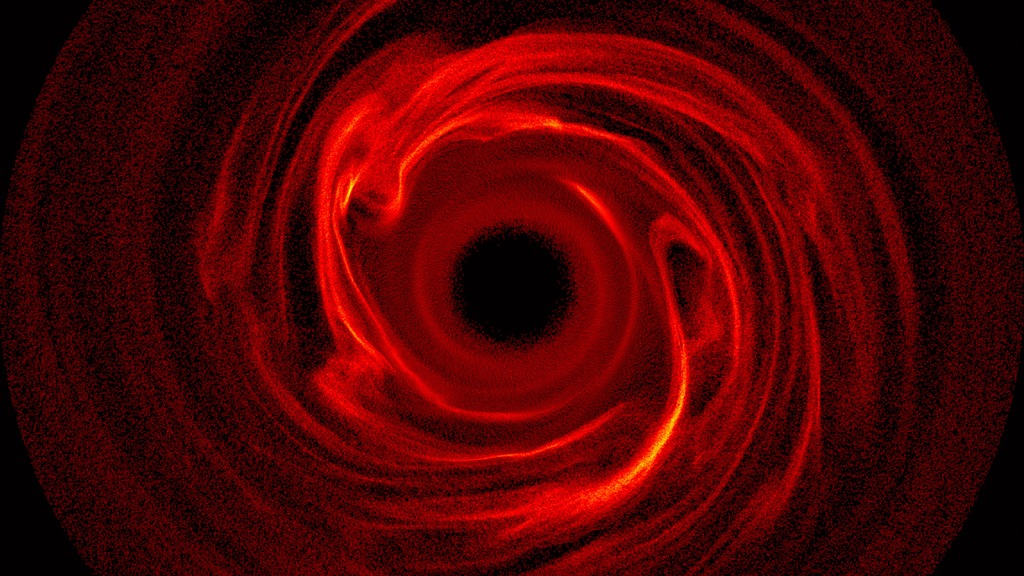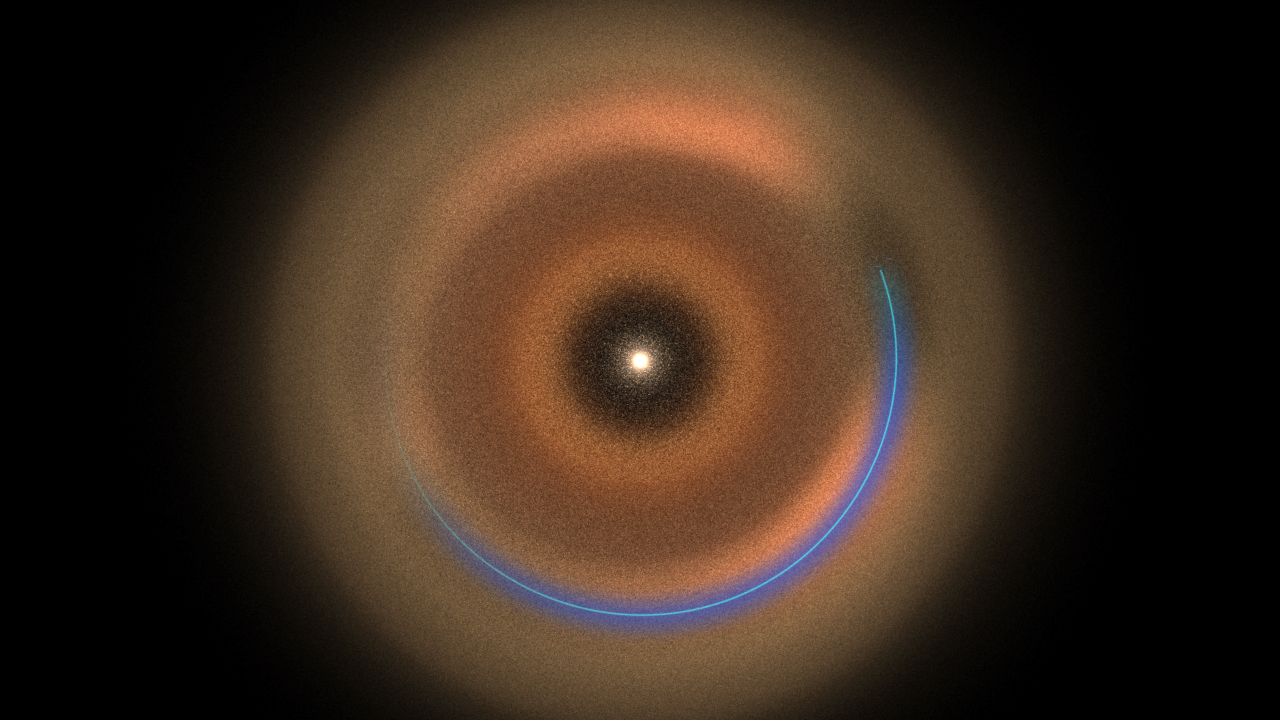Debris Disks Make Patterns Without Planets
A study by NASA scientists sounds a cautionary note in interpreting rings and spiral arms as signposts for new planets. Thanks to interactions between gas and dust, a debris disk may, under the right conditions, produce narrow rings on its own, no planets needed.
Many young stars known to host planets also possess disks containing dust and icy grains, particles produced by collisions among asteroids and comets also orbiting the star. These debris disks often show sharply defined rings or spiral patterns, features that could signal the presence of orbiting planets. Astronomers study the structures as a way to better understand the physical properties of known planets and possibly uncover new ones.
When the mass of gas is roughly equal to the mass of dust, the two interact in a way that leads to clumping in the dust and the formation of patterns. Effectively, the gas shepherds the dust into the kinds of structures astronomers would expect to see if a planet were present.
Lyra and Kuchner refer to this as the photoelectric instability and developed a simulation to explore its effects. This animation shows how the process alters the density of dust in a debris disk and rapidly leads to the formation of rings, arcs and oval structures.
Watch the changing dust density and the growth of structure in this simulated debris disk. Dust quickly collects into clumps and then forms arcs and rings, structures similar to what astronomers observe in actual debris disks. As the dust heats the gas, the gas pressure increases and changes the drag force experienced by the dust. This essentially herds the dust into clumps that grow into larger patterns. The panel at left shows the disk from an angle of 24 degrees; at right, the disk is face-on. Lighter colors indicate higher dust density. For clarity, the animation does not show light from the central star. The disk extends about 100 times the average distance between Earth and the sun (100 AU, or 9.3 billion miles), which is comparable to the outer edge of our solar system’s Kuiper Belt.
Credit: NASA Goddard/W. Lyra (JPL-Caltech), M. Kuchner (Goddard)
Watch this video on the NASAexplorer YouTube channel.
Simulation of planetary disk ring structure formation viewed from above.
Credit: NASA Goddard/W. Lyra (JPL-Caltech), M. Kuchner (Goddard)
Simulation of planetary disk ring formation viewed from 24 degrees above the disk plane.
Credit: NASA Goddard/W. Lyra (JPL-Caltech), M. Kuchner (Goddard)

This chart compares the gas mass for several debris disk systems and shows where the photoelectric instability is most important. Systems like TW Hydrae contain so much gas that the instability is suppressed, but it could arise in relatively gas-free regions near the center of the disk.
Credit: NASA's Goddard Space Flight Center
For More Information
Credits
Please give credit for this item to:
NASA's Goddard Space Flight Center. However, individual elements should be credited as indicated above.
-
Animator
- Wladimir Lyra (CalTech)
-
Video editor
- Scott Wiessinger (USRA)
-
Producer
- Scott Wiessinger (USRA)
-
Scientists
- Marc Kuchner (NASA/GSFC)
- Wladimir Lyra (CalTech)
-
Writer
- Francis Reddy (Syneren Technologies)
Release date
This page was originally published on Friday, July 12, 2013.
This page was last updated on Wednesday, May 3, 2023 at 1:52 PM EDT.

